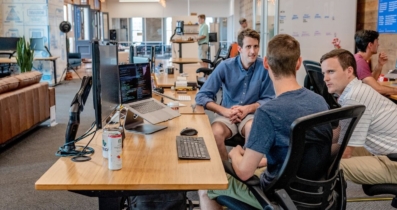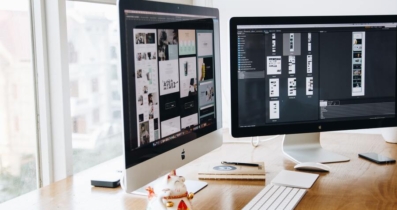We live in times when it becomes increasingly difficult to distinguish reality from deceit. Every day we are bombarded with information that exposes us to lies and propaganda. From photoshopped photos on social networks to dangerous cases of political propaganda – image and video manipulation can significantly impact individuals and businesses.
As technology advances, there are more and more documents, photos, and other important data forgery cases. As a result, professional fakes are difficult to recognize, especially with the rapidly evolving artificial intelligence (AI) technology. In this article, you’ll learn about the dangers of forged and fake photos for individuals and companies and how to avoid the trap of false reality.
What are the dangers of fake pictures and videos?
There are various cases of photo forgery. It can be as simple as editing and deleting crucial facial features to alter the pictures. In more severe cases, someone might steal and use a photo without the owner’s knowledge and consent. However, Instagram filters and retouched photos are only a small part of the problem.
One rapidly growing form of photo fraud is AI-generated images and so-called deepfake videos. These visuals are almost indistinguishable from real people, but in reality, they do not exist. Such photos can be used for propaganda purposes or to gain financial benefits (access to investments, getting a loan, etc.), or to hide one’s identity (usually by hiding political relations or involvement in money laundering).
One of the infamous cases of fraud is the Boston law firm scam. A firm called Arthur Davidson Legal was trying to get backlinks to its websites by deceiving people. Normally, such links are used to improve a website’s position in search engines. However, the firm did it illegally, using intimidation tactics to get what it wanted. And the most interesting part was that the lawyers and legal advisors listed on their website did not exist in real life. All the photos of employees on the firm’s website were generated using artificial intelligence. This is just one of many similar scams where fake photos are used for personal gains.
Deepfake is another rapidly growing problem. It’s an intelligent way of falsifying video footage using artificial intelligence. Through advanced programs, one can add a person’s face or body to a completely different person and recreate movements and speech imperceptibly. This technology is usually used to humiliate or discredit people. However, deepfake technology is becoming a dangerous propaganda tool.
In one widely publicized case, Ukrainian President Volodymyr Zelensky became a victim of deepfake technology. A fake video surfaced where he appeared to urge his fellow citizens to surrender during wartime. However, it was quickly revealed that the video was propaganda created using deepfake video technology.
But the problem of image falsification is much more prevalent, and it also includes document forgery. In just one year, European Union officials detected 7,536 forged documents (passports, ID cards, etc.).
Photo forgeries pose an exceptionally high risk to financial institutions that provide financing and other remote services. One of the ways to combat the growing number of fakes is through KYC (Know Your Customer) processes. The European Union requires that companies that provide financial services must use KYC to confirm customer identity, which can be done in multiple ways.
One of the most common methods of verifying identity is by submitting your photo and documents for an official review. However, to successfully detect photo forgeries, special programs and tools are necessary, as well as an understanding of how to identify a fake.

Prevention and penalties for photo forgery
Forged photos can be used for various purposes. Some target individuals, while others are used to deceive companies and government agencies. Depending on the case, photo forgery can also be classified as document forgery and possession.
According to Article 300 of the Criminal Code of the Republic of Lithuania, document forgery is punishable by arrest or imprisonment for several years. Of course, the penalties are more severe when forged photos are used to obtain illegal financing or for money laundering.
However, with the advancement of technology and the influence of artificial intelligence, it’s increasingly difficult to detect forgeries and protect against them. Therefore, based on the Law on Prevention of Money Laundering and Terrorist Financing of the Republic of Lithuania, all companies that provide financial services must use KYC authentication processes.
This way, the company can verify the identity of its clients and ensure security. However, each individual and company need to know how to recognize forged photos and what tools to use to avoid fraud.
How to recognize a fake photo?
AI-generated photos are almost indistinguishable from real human images, so it’s nearly impossible to tell them apart without close inspection. Even an experienced human eye can miss certain details. So we invite you to test your skills in recognizing AI-generated images. Here you can check if you can differentiate a fake photo from a real one.
Here are several ways that can help you identify an AI-generated photo:
- Pay attention to the background behind the person’s face. In most cases, the background in artificially generated photos is blurry, merged, and seamless.
- Accessories and jewelry may be blended into the skin or be asymmetrical and not in the appropriate places. For example, a person in a photo may be wearing glasses without frames.
- Unnatural skin texture and oddly falling hair. It may seem like the hair blends in with the clothes or the skin on the face.
- Mixed colors – when the background merges with the contours of the face and clothes.
- Parts of the photo look as if they were painted with a brush.
How can companies improve their identity authentication and photo recognition?
Identifying forgeries can be extremely challenging for companies dealing with hundreds of photos and videos daily. That’s why they need special verification systems. Currently available solutions use artificial intelligence and other advanced technologies that can recognize altered photos, filters, masks, fake digital images, and other attempts to mask a person’s identity.
Modern identity recognition and authentication tools are crucial for financial service providers, stock brokers, fintech businesses, as well as gaming or gambling companies that need to verify the age of their users.
Knowing this rapidly growing problem, we developed a modern solution that can help prevent fake identities and forged photos quickly and easily. Mark ID solution offers an advanced KYC authentication process where the person’s identity is accurately verified through a double security process, using algorithms and human experts.
A part of the solution is an anti-money laundering (AML) function that offers a comprehensive check of a person.
Our algorithms inspect:
- Whether the person has political ties or participates in politics.
- Whether they are on any blacklists (such as Interpol, FBI, World Bank’s list of wanted persons, etc.).
- Whether there are sanctions against them in any country.
- The system also checks the person’s reputation in the public domain, whether there are negative news reports about them in the media or on social networks.
We ensure exceptional service quality with 98,4% accuracy. The system can analyze a picture within half a second. It also creates recognition mapping and models to spot repeated images and recognize photographs that are more likely to be fake.
On top of that, our security officers analyze each submitted photo, providing uninterrupted 24/7 service and double protection for your business. We help you integrate and customize our KYC and anti-money laundering features, but you can also choose a standard integration that can be used everywhere across the world.
Protect yourself and your business from fake images and scams
Fake images and documents pose risks to individuals, businesses, and public institutions. Each year, thousands of people become victims of fraudsters, losing billions to scams and money laundering. We want to encourage individuals and companies to be more alert to prevent such attacks in the future. Therefore, we invite you to learn more about our identity verification and anti-money laundering solutions.



